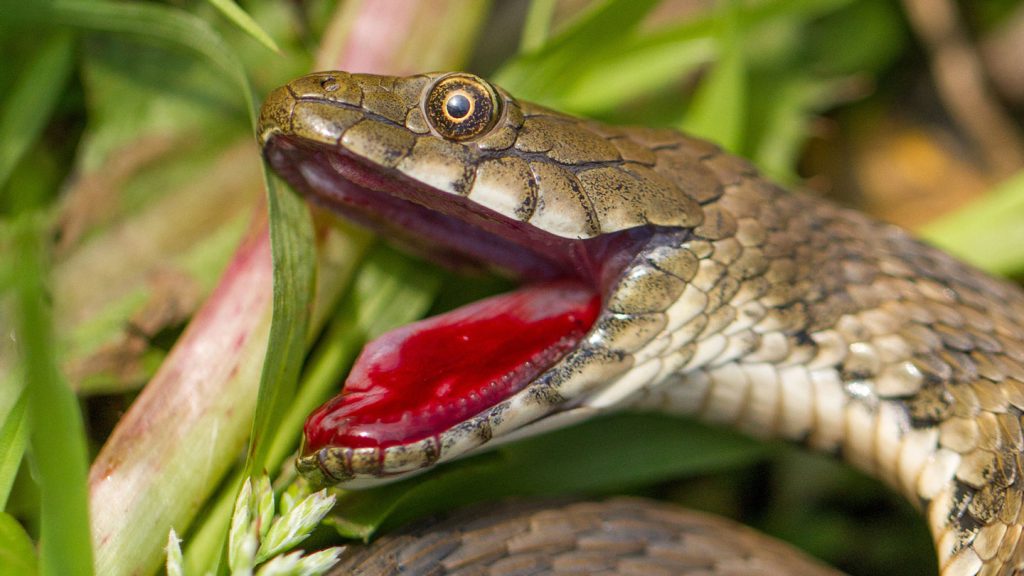Death-feigning as a defense tactic is a common behavior among various animal species. It involves prey pretending to be dead to avoid being eaten by predators. The dice snake, for example, employs an elaborate strategy when feigning death, including thrashing around, hissing, covering itself in musk and feces, and bleeding from the mouth. Researchers wanted to determine if these combined defenses make the fake death display more efficient.
Biologists from the University of Belgrade in Serbia conducted a study on wild dice snakes to investigate the impact of different defensive behaviors on the duration of feigned death. They found that snakes that covered themselves in musk and feces spent less time pretending to be dead compared to those that didn’t. Additionally, snakes that bled from the mouth combined with musk and feces displayed a faster fake death. This suggests that the combination of defensive tactics could be working synergistically to enhance the overall effectiveness of the display.
The study involved observing the behaviors of dice snakes in response to potential predation threats. The researchers recorded instances of snakes smearing themselves in musk and feces, bleeding from the mouth, and other behaviors associated with fake death. They found that snakes employing all three defenses spent less time feigning death than those using only one or two. The rapid response to threats could potentially increase the survival chances of the snakes by deterring predators quickly.
The findings of the study highlight the complexity of antipredator responses and the importance of considering these behaviors as an integrated system. Understanding the reasons for the variation in defensive tactics among snakes is crucial for unraveling the evolutionary significance of such behaviors. The research also raises questions about predator perception and response to apparently dead animals, shedding light on the dynamics between predators and prey in the wild.
Further research is needed to explore the predator side of this defensive behavior and investigate why predators are deterred by feigned death displays. By studying both sides of the predator-prey interaction, scientists can gain a more comprehensive understanding of the evolutionary pressures driving these behaviors. Overall, the study contributes valuable insights into the intricate strategies that animals employ to survive in the face of predation threats and highlights the interconnected nature of antipredator defenses in the animal kingdom.















